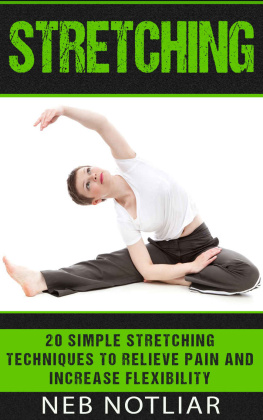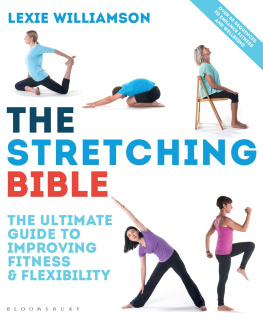 Text copyright 2015 Mark Kovacs. Design and concept copyright 2015 Ulysses Press and its licensors. Photographs copyright 2015 Rapt Productions except as noted below. All rights reserved. Any unauthorized duplication in whole or in part or dissemination of this edition by any means (including but not limited to photocopying, electronic devices, digital versions and the Internet) will be prosecuted to the fullest extent of the law. Published in the United States by Ulysses Press P.O.
Text copyright 2015 Mark Kovacs. Design and concept copyright 2015 Ulysses Press and its licensors. Photographs copyright 2015 Rapt Productions except as noted below. All rights reserved. Any unauthorized duplication in whole or in part or dissemination of this edition by any means (including but not limited to photocopying, electronic devices, digital versions and the Internet) will be prosecuted to the fullest extent of the law. Published in the United States by Ulysses Press P.O.
Box 3440 Berkeley, CA 94703 www.ulyssespress.com ISBN: 978-1-61243-389-9 Library of Congress Control Number 2014932310 10 9 8 7 6 5 4 3 2 1 Acquisitions: Kelly Reed Managing editor: Claire Chun Editors: Lauren Harrison, Lily Chou Proofreader: Renee Rutledge Indexer: Sayre Van Young Front cover and interior design: what!design @ whatweb.com Cover artwork: woman Rapt Productions; horizontal strap graphic sellingpix/shutterstock.com Interior photographs: Rapt Productions except on page 11 Photobank gallery/shutterstock.com Models: Kathleen Aeschlimann, Mark Kovacs, Toni Silver Make-up: Sabrina Foster PLEASE NOTE: This book has been written and published strictly for informational purposes, and in no way should be used as a substitute for consultation with health care professionals. You should not consider educational material herein to be the practice of medicine or to replace consultation with a physician or other medical practitioner. The author and publisher are providing you with information in this work so that you can have the knowledge and can choose, at your own risk, to act on that knowledge. The author and publisher also urge all readers to be aware of their health status and to consult health care professionals before beginning any health program. This book is independently authored and published. No sponsorship or endorsement of this book by, and no affiliation with any flexible stretching strap, including the TheraBand Stretch Strap or any other trademarked brands or products mentioned or pictured, is claimed or suggested.
All trademarks that appear in this book belong to their respective owners and are used here for informational purposes only. The author and publisher encourage readers to patronize the quality brands and other products mentioned and pictured in this book. TABLE OF CONTENTSA typical day for a college athlete involves hours of practice, then weight workouts often followed by rehabilitation or injury prevention work and recovery (i.e., massage treatment by a physical therapist, athletic trainer or chiropractor). A mom, on the other hand, bends down constantly to pick up her child. Even recreational adult tennis players put strain on their bodies during practice and matches. Our bodies are constantly being pulled, pushed, stressed and generally worn out.
Sports and activities of daily living cause muscles to contract on a regular basis. These contractions can shorten certain muscles and over time can reduce those muscles range of motion. Fortunately, many factors help our bodies recover, adapt and improve. Stretching is one of the best methods to ease stress, reduce negative effects of heavy training and improve overall performance.Adding regular stretching to the weekly routine can significantly improve flexibility and serve to provide many health, wellness and performance benefits to athletes at all levels, from recreational to professional. Its also essential for any athlete whos rehabbing from surgery or an extended layoff due to injury.As a performance physiologist, strength and conditioning coach and personal trainer, Ive worked with thousands of athletes, ranging from recreational sports enthusiasts to some of the best athletes in the world, such as Olympians and NFL, NBA and MLB players. Ive implemented effective flexibility programs into the daily routine of these athletes.
One of the most important aspects in building these workouts is to keep in mind that not all athletes need the same stretching program. Some require a lower-body focus, while some need more upper-body work; certain sports need extra focus on rotational movements in the core/trunk area, whereas other sports need significant time spent on reducing major flexibility imbalances.Each athlete is different, as is each sport. Fortunately, some common flexibility exercises overlap for certain sports. For example, a baseball pitcher and tennis player both have reduced range of motion in their dominant shoulderspecifically, the internal range of motion. This is a common result of the demands of their sports. As a result, baseball and tennis players should perform a specific stretching routine to help limit the likelihood of this decreased range of motion.
This is just one example of a sport-specific flexibility limitation that occurs due to the thousands of hours of training and competition that athletesat all levelsendure.Using the flexible stretching strap can significantly increase range of motion above and beyond general stretching alone. This book will provide an effective, portable and efficient method to stretch all the major muscles of the body using this simple yet highly useful tool. Flexibility is at the base of all good human movement. If you have limited flexibility (range of motion) in a particular area of the body, plane of motion or single muscle or joint, youll be limited in achieving optimal movement in sports or daily life. This limitation can restrict performance and increase overall imbalances, and over time can potentially lead to injury. Its important to appropriately work on flexibility in a progressive manner and in a way that will improve your performance in sports and in activities of daily living.The human body is a unique structure. Its made up of more than 640 muscles and approximately 206 major bones, and is packed within a tissue known as fascia thats connected from head to toe.
Flexibility is at the base of all good human movement. If you have limited flexibility (range of motion) in a particular area of the body, plane of motion or single muscle or joint, youll be limited in achieving optimal movement in sports or daily life. This limitation can restrict performance and increase overall imbalances, and over time can potentially lead to injury. Its important to appropriately work on flexibility in a progressive manner and in a way that will improve your performance in sports and in activities of daily living.The human body is a unique structure. Its made up of more than 640 muscles and approximately 206 major bones, and is packed within a tissue known as fascia thats connected from head to toe.
Having appropriate flexibility and understanding how to effectively improve flexibility can make a major difference in your life and lead to better performance in your sport (or sports) of choice.Body MovementsThis book is designed to help you on your journey to improved flexibility. To get the most out of it, you should be familiar with some basic stretching vocabulary. The following are some of the most frequently used terms with respect to flexibility, and will provide a good overview to help you navigate the terminology throughout the remainder of the book.Range of MotionRange of motion is the degree of movement that occurs at a joint. For athletes, its important to have functional or sport-specific range of motion in the planes of motion and movement patterns used during practice or competition. A hockey goalie, for example, needs a much greater range of motion in the hip than a 100-meter track sprinter. These differences are determined by the demands of the sport.
The hockey goalie needs to drop and spread his legs dozens of times per training or competition day, and he needs to train to successfully accomplish this movement. The sprinter, on the other hand, only needs to successfully run in a straight line (albeit very quickly). The demands of the activities are very different and how those athletes train, recover and stretch will be different as a result.
Next page





 Text copyright 2015 Mark Kovacs. Design and concept copyright 2015 Ulysses Press and its licensors. Photographs copyright 2015 Rapt Productions except as noted below. All rights reserved. Any unauthorized duplication in whole or in part or dissemination of this edition by any means (including but not limited to photocopying, electronic devices, digital versions and the Internet) will be prosecuted to the fullest extent of the law. Published in the United States by Ulysses Press P.O.
Text copyright 2015 Mark Kovacs. Design and concept copyright 2015 Ulysses Press and its licensors. Photographs copyright 2015 Rapt Productions except as noted below. All rights reserved. Any unauthorized duplication in whole or in part or dissemination of this edition by any means (including but not limited to photocopying, electronic devices, digital versions and the Internet) will be prosecuted to the fullest extent of the law. Published in the United States by Ulysses Press P.O.